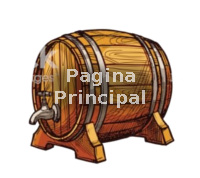Ingredientes
- Malta de 2.8 lb. (1.27 kilos) (2 partes de Biscuit, 1 parte de Munich Light y 1/2 parte de Special B)
- 3 libras (1.36 kilos) de harina de trigo integral gruesa
- 0.3 lb. (0.136 kilos) avena gruesa (Steel-cut oats)
- 0.75 galones (3.4 litrios) de agua hirviendo, tres veces
- 0.3 onzas (8.5 gramos) Lúpulos ingleses (utilicé Fuggles)
- 0.1 oz (2.8 gramos) Mirto de Brabante o mirto de turbera (Myrica gale)
- 0.1 oz (2.8 gramos) de Raíz de orris (lirio, Iris germanica, Iris florentina o Iris pallida)
- levadura ale
Preparación
- Caliente 1 galón (4.54 litros) de agua hasta que esté un poco demasiado caliente para poner una mano.
- Coloque esto sobre la malta, luego cúbralo y envuélvalo para que haga puré durante aproximadamente una hora.
- Escurrir y reservar el líquido, reservando el grano.
- Calentar 1 galón (4.54 litros) de agua y verter nuevamente sobre los granos. Una vez más, envolver y dejar reposar durante aproximadamente una hora.
- Ponga el resto del mosto del primer lote en la estufa, y caliente.
- Agregue los lúpulos en una bolsa para colar y deje cocinar hasta que le quede un galón (4.54 litros).
- Dejar enfriar y echar levadura. Fermentar sensiblemente, y botella igualmente.
Esta fue una receta compleja para analizar, a pesar de su longitud y su aparente nivel de detalle. Uno de los trucos para tomar una receta antigua y hacerla más manejable para la elaboración de cerveza moderna es el problema del alcance. La receta original estaba destinada a producir más de 200 galones de cerveza, que es mucho más de lo que la mayoría de los cerveceros están preparados para hacer en casa.
Con algunas matemáticas inteligentes obtenemos:
Para simular el malteado impredecible de la cebada histórica, se utilizo 2 partes de Biscuit, 1 parte de Munich Light y 1/2 parte de Special B. Se buscaba una cerveza más ligera, así que se eligió esos granos por gusto. Los arándanos están relacionados con el Mirto de Brabante o mirto de turbera (Myrica gale), así que fue sustituido por eso.
El sabor es muy singular, ligero y refrescante.
- 2.8 # malta
- 0.3 # cada trigo y avena
Para simular el malteado impredecible de la cebada histórica, se utilizo 2 partes de Biscuit, 1 parte de Munich Light y 1/2 parte de Special B. Se buscaba una cerveza más ligera, así que se eligió esos granos por gusto. Los arándanos están relacionados con el Mirto de Brabante o mirto de turbera (Myrica gale), así que fue sustituido por eso.
El sabor es muy singular, ligero y refrescante.
Having therefore groond eight bushels of good malt upon our querne, where the toll is saved, she addeth unto it half a bushel of wheat meale, and so much of otes small groond, and so tempereth or mixeth them with the malt, that you cannot easily discerne the one from the other, otherwise these later would clunter, fall into lumps, and thereby become unprofitable. The first liquor which is full eighde gallons according to the proportion of our furnace, she maketh boiling hot, and then powreth it softlie into the malt, where it resteth (but without stirring) untill hir second liquor be almost ready to boile. This doone she letteth hir mash run till the malt be left without liquor, or at the leastwise the greater part of the moisture, which she perceiveth by the staie and softe issue thereof, and by this time hir second liquor in the furnace is ready to seeth, which is put also to the malt as the first woort also againe into the furnace, whereunto she addeth two pounds of the best English hops, and so letteth them seeth together by the space of two hours in summer, or an houre and a halfe in winter, whereby it getteth an excellent colour and continuance without impeachment, or anie superfluous tartnesse. But before she putteth her first woort into the furnace, or mingleth it with the hops, she taketh out a vessel full, of eight or nine gallons, which she shutteth up close, and suffereth no afire to come into it till it become yellow, and this she reserveth by it selfe unto further use, as shall appeare hereafter, calling it Brackwoort or Charwoort, and as she saith it addeth also to the colour of the drinke, whereby it yeeldeth not unto amber or fine gold in hew unto the eie. By this time also hir second woort is let runne, and the first being taken out of the furnace and placed to Goole, she returneth the middle woort into the furnace, where it is striken over, or from whence it is taken againe…When she hath mashed also the last liquor (and set the second to Goole by the first) she letteth it runne and then seetheth it againe with a pound and a half of new hops or peradventure two pounds as she seeth cause by the goodness or baseness of the hops; and when it hath sodden in summer two hours, and in winter an houre and a halfe, she striketh it also and reserveth it unto mixture with the rest when time doth serve therefore. Finallie when she setteth hir drinke together, she addeth to hir brackwoortl or charwoort halfe an ounce of arras and halfe a quarterne of an ounce of baiberries finelie powdered, and then putteth the same into hir woort with an handful of wheate floure, she proceedeth in such usuall order as common bruing requireth. Some in steed of arms and baies add so much long peper onely, but in hir opinion and my lyking it is not so good as the first, [1] and hereof we make three hoggesheads of good beere, such (I meane) as is meet for poore men as am I to live withall whose small maintenance (for what great thing is fortie pounds a yeare computatis computandis, able to performe?) may indure no deeper cut, the charges whereof groweth in this manner. -England in Shakespeare’s Time, by William Harrison, 1577










